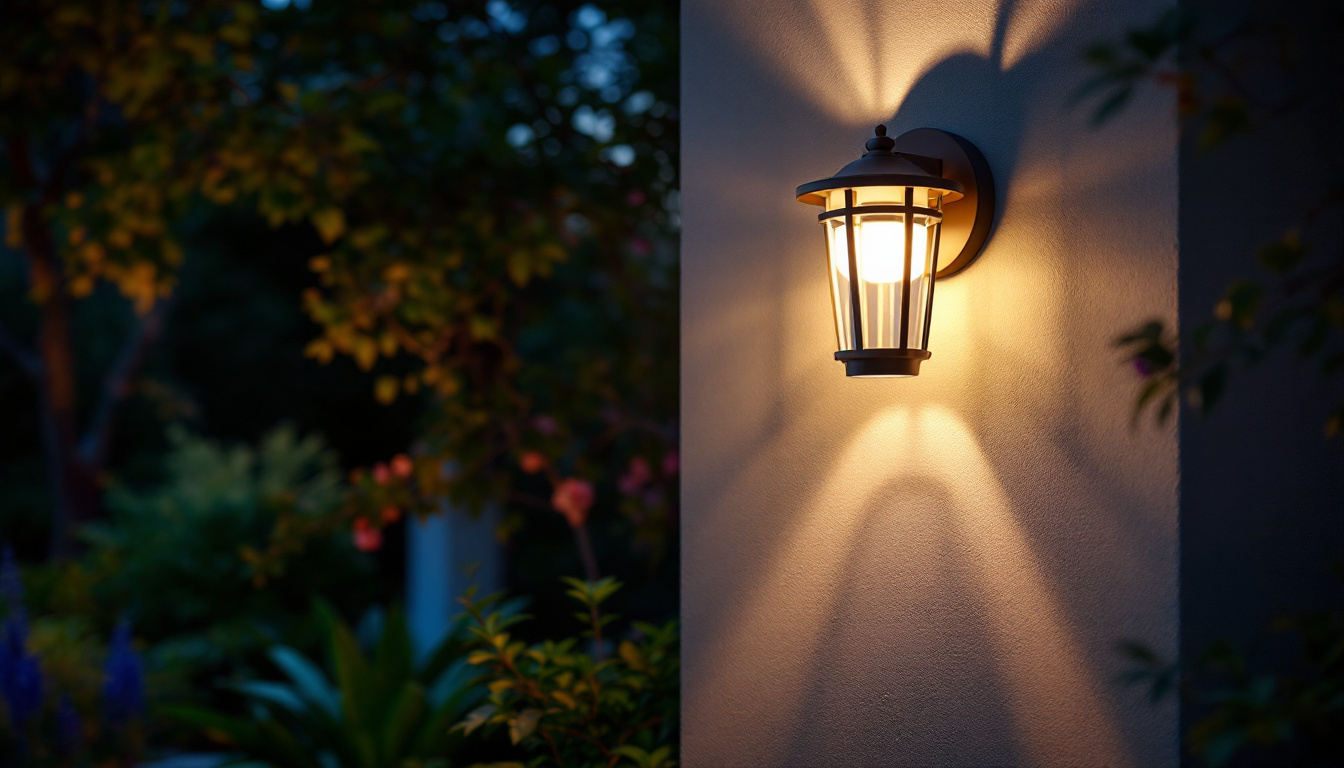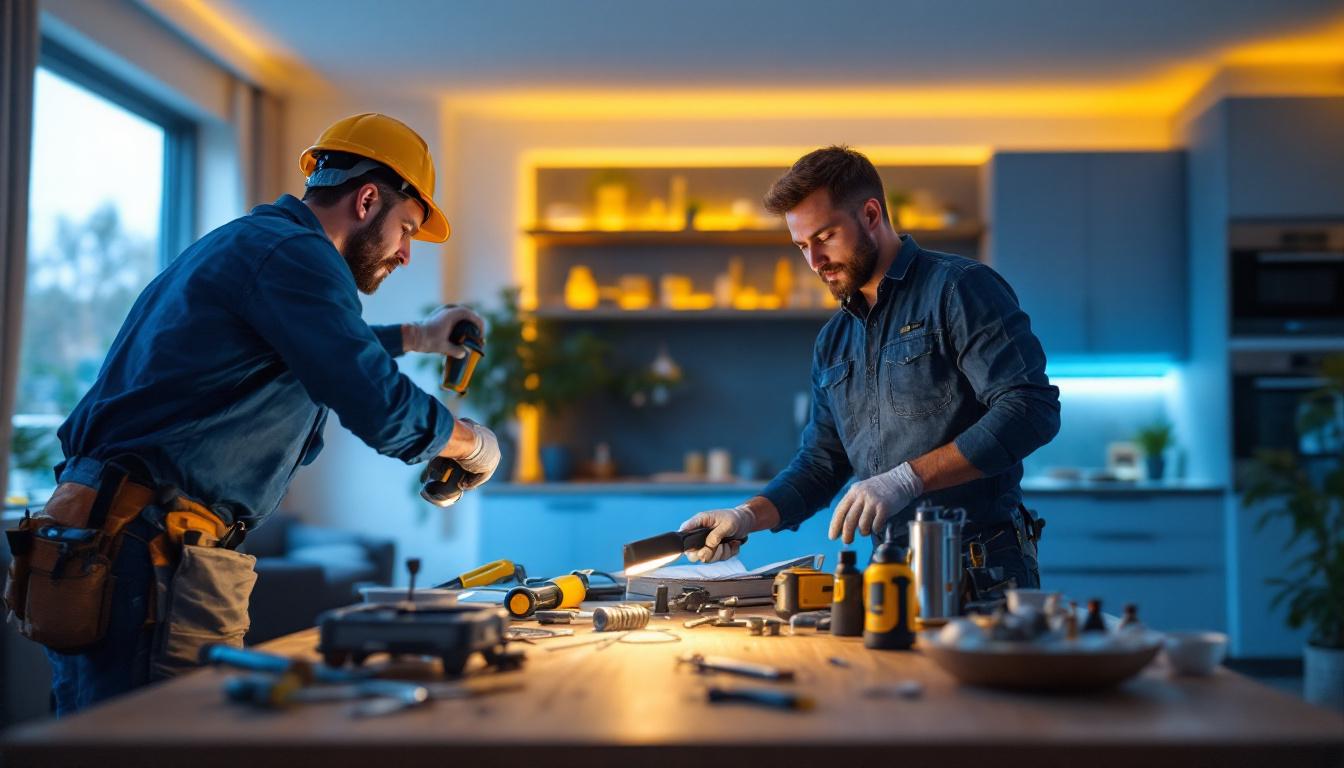
outdoor lighting fixtures play a crucial role in enhancing the safety, security, and aesthetic appeal of residential and commercial properties. For lighting contractors, understanding the various types of outdoor fixtures available is essential for meeting client needs and ensuring successful installations. This article will delve into the key aspects of outdoor lighting fixtures, providing insights that can be grasped in just five minutes.
Outdoor lighting fixtures come in various styles and designs, each serving distinct purposes. The most common types include wall-mounted lights, post lights, floodlights, and pathway lights. Wall-mounted lights are ideal for illuminating entryways and patios, while post lights can enhance driveways and gardens. Floodlights are perfect for providing broad illumination for security purposes, and pathway lights guide guests safely along walkways.
Each type of fixture has its unique features and benefits. For instance, wall-mounted lights often come with motion sensors, adding an extra layer of security. Post lights can be decorative and functional, enhancing the landscape while providing necessary illumination. Understanding these differences allows contractors to recommend the best solutions based on the specific requirements of a project. Moreover, decorative fixtures can also serve as focal points in a garden or yard, contributing to the overall design aesthetic while fulfilling practical lighting needs.
When selecting outdoor lighting fixtures, several factors should be considered. First, the purpose of the lighting must be defined. Is it for security, decoration, or functional use? This will guide the choice of fixture type and style. Second, the environment where the fixtures will be installed plays a significant role. Factors such as weather conditions, exposure to moisture, and potential vandalism should influence the selection process.
Additionally, energy efficiency is a growing concern in outdoor lighting. With advancements in LED technology, many contractors are now opting for LED fixtures, which consume less energy and have longer lifespans compared to traditional incandescent bulbs. This not only reduces energy costs for clients but also aligns with sustainability goals. Furthermore, the versatility of LED fixtures allows for a range of color temperatures and brightness levels, enabling contractors to create customized lighting schemes that can enhance the ambiance of outdoor spaces. The ability to dim or change colors can also be a significant advantage for events or seasonal decorations, making these fixtures a popular choice for both residential and commercial applications.
Proper installation of outdoor lighting fixtures is vital for ensuring functionality and longevity. Lighting contractors must adhere to best practices to avoid common pitfalls that can lead to inadequate performance or safety hazards.
Before installation, a well-thought-out lighting plan should be developed. This involves determining the optimal placement of fixtures to achieve the desired illumination levels while avoiding light pollution. Contractors should consider the height and angle of fixtures to minimize glare and ensure even distribution of light.
Moreover, it is essential to take into account the existing landscape features. Trees, shrubs, and architectural elements can all impact how light is distributed. A comprehensive layout plan will help in visualizing the final outcome and ensure that all areas are adequately illuminated.
In addition to considering the physical landscape, contractors should also think about the intended use of the outdoor space. For example, pathways may require brighter lighting for safety, while patio areas might benefit from softer, ambient lighting to create a welcoming atmosphere. Engaging with clients to understand their preferences and needs can lead to a more tailored lighting design that enhances the overall aesthetic and functionality of the outdoor environment.
Electrical safety is paramount when installing outdoor lighting fixtures. Contractors should ensure that all wiring is rated for outdoor use and is properly protected against moisture and physical damage. Using weatherproof junction boxes and conduit can help safeguard electrical connections.
Additionally, it is crucial to follow local electrical codes and regulations. This not only ensures safety but also helps avoid potential legal issues. Contractors should also consider the use of timers or smart controls that allow clients to manage their outdoor lighting efficiently.
Furthermore, it is advisable to conduct a thorough inspection of the electrical system before installation begins. This includes checking for any existing wiring issues, ensuring that circuit breakers are functioning correctly, and verifying that the power supply can handle the additional load from the new fixtures. By addressing these factors upfront, contractors can prevent future complications and ensure a smooth installation process. Regular maintenance checks post-installation are also recommended to keep the system operating optimally and to identify any potential issues before they escalate.
Regular maintenance of outdoor lighting fixtures is essential for ensuring their longevity and optimal performance. Lighting contractors should educate clients on simple maintenance tasks that can be performed to keep fixtures in good condition. This proactive approach not only extends the lifespan of the lighting systems but also enhances safety and energy efficiency, making it a worthwhile investment for homeowners.
Routine checks should include inspecting fixtures for any signs of wear or damage, such as cracked lenses or corroded connections. Cleaning the fixtures periodically can also enhance their performance, as dirt and debris can obstruct light output. Clients should be encouraged to replace burnt-out bulbs promptly to maintain consistent illumination. Additionally, checking the alignment of fixtures can ensure that light is directed where it is needed most, preventing dark spots and enhancing the overall aesthetic of the outdoor space.
Contractors can also offer maintenance services as part of their offerings, providing clients with peace of mind that their outdoor lighting systems will remain functional and effective over time. Seasonal maintenance packages can be an attractive option, allowing clients to schedule regular inspections and cleanings, particularly before the winter months when snow and ice can impact outdoor lighting performance.
Even with regular maintenance, issues may arise with outdoor lighting fixtures. Common problems include flickering lights, inconsistent brightness, or complete failure of fixtures. Contractors should be equipped to troubleshoot these issues effectively. Understanding the root cause of these problems is crucial for providing quick and efficient solutions, which can save clients both time and money in the long run.
For flickering lights, checking the bulb connection and ensuring the correct wattage is being used can often resolve the issue. Inconsistent brightness may indicate a problem with the power supply or wiring, while complete failure may require a more in-depth inspection of the fixture and its connections. It is also beneficial to educate clients on the importance of using high-quality bulbs and fixtures, as these can significantly reduce the frequency of issues and enhance the overall reliability of their outdoor lighting systems. Furthermore, implementing a simple troubleshooting guide for clients can empower them to address minor issues independently, fostering a sense of ownership and responsibility for their outdoor lighting maintenance.
As outdoor living spaces continue to evolve, so do the trends in outdoor lighting design. Lighting contractors should stay informed about the latest trends to provide clients with innovative solutions that enhance their outdoor environments.
Smart outdoor lighting systems are becoming increasingly popular, allowing homeowners to control their lighting remotely via smartphone apps or voice-activated devices. These systems not only offer convenience but also enhance security by allowing homeowners to simulate occupancy when they are away.
Contractors should familiarize themselves with various smart lighting products available on the market, as well as the installation requirements for these systems. Offering smart lighting solutions can set contractors apart from competitors and attract tech-savvy clients. Furthermore, the integration of smart lighting with home automation systems can create a seamless experience, where lighting adjusts automatically based on time of day or occupancy, enhancing both comfort and energy efficiency.
With growing awareness of environmental issues, there is a significant emphasis on sustainability in outdoor lighting design. Many clients are seeking energy-efficient solutions that minimize their carbon footprint. Lighting contractors can recommend solar-powered fixtures or those with LED technology to meet these demands.
Additionally, using fixtures made from sustainable materials can appeal to eco-conscious clients. By integrating sustainable practices into their offerings, contractors can position themselves as responsible and forward-thinking professionals in the industry. Beyond just the fixtures themselves, incorporating designs that utilize natural light effectively, such as strategically placed solar lights or fixtures that enhance the moonlight, can further reduce energy consumption and create a more harmonious outdoor space. This holistic approach not only meets client demands but also contributes positively to the environment, making it a win-win for both contractors and homeowners alike.
Outdoor lighting fixtures are essential components in enhancing the safety, security, and beauty of outdoor spaces. For lighting contractors, understanding the various types of fixtures, installation best practices, maintenance requirements, and current trends is crucial for delivering exceptional service to clients.
By staying informed and adapting to the evolving landscape of outdoor lighting, contractors can ensure they provide effective solutions that meet the diverse needs of their clients. Whether it’s through innovative designs, energy-efficient options, or smart technology, the potential for creating stunning outdoor environments is limitless.
In summary, investing time in understanding outdoor lighting fixtures and their applications can significantly benefit lighting contractors, leading to successful projects and satisfied clients.
Ready to elevate your outdoor lighting projects with the finest fixtures on the market? Look no further than LumenWholesale, where we provide lighting contractors with exceptional, spec-grade lighting products at unbeatable wholesale prices. Say goodbye to local distributor markups and hello to our premium selection that meets the highest industry standards. With free shipping on bulk orders, you can trust that you’re getting the best value without any hidden fees. Enhance your outdoor spaces with reliable, high-performance lighting solutions. Wholesale Lighting at the Best Value is just a click away. Make the smart choice for your business and your clients with LumenWholesale.

Discover how understanding fluorescent tube connection diagrams can lead to significant cost savings for lighting contractors.

Discover essential compliance guidelines and expert insights for lighting contractors working with LED lights in bathrooms.

Discover effective strategies for lighting contractors to tackle common challenges when installing retrofit LED can lights.

Discover why Sylvania light bulbs are a top choice for lighting contractors.